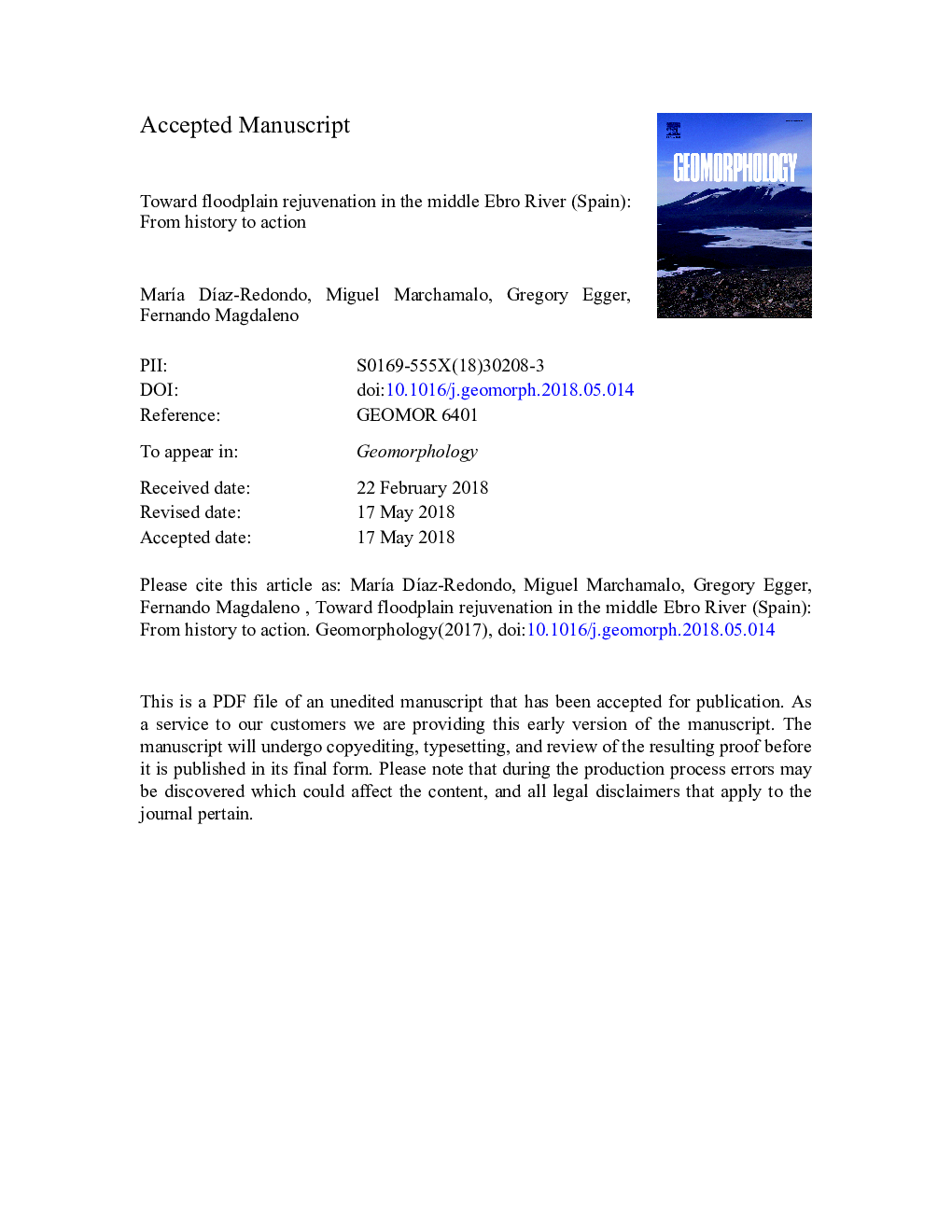| کد مقاله | کد نشریه | سال انتشار | مقاله انگلیسی | نسخه تمام متن |
|---|---|---|---|---|
| 8907967 | 1635333 | 2018 | 35 صفحه PDF | دانلود رایگان |
عنوان انگلیسی مقاله ISI
Toward floodplain rejuvenation in the middle Ebro River (Spain): From history to action
ترجمه فارسی عنوان
به سوی جوان سازی سیلاب در وسط رود ابرو (اسپانیا): از تاریخ به عمل
دانلود مقاله + سفارش ترجمه
دانلود مقاله ISI انگلیسی
رایگان برای ایرانیان
کلمات کلیدی
بیوگرافی شناسی، بازسازی مبتنی بر فرآیند، سناریوها، میربای رود ابرو،
موضوعات مرتبط
مهندسی و علوم پایه
علوم زمین و سیارات
فرآیندهای سطح زمین
چکیده انگلیسی
The Mediterranean region is recognized as one of Earth's biodiversity hotspots, but disconnection of habitats and fluxes of energy and nutrients have made them particularly vulnerable to external perturbations in the current context of global warming. This paper presents a multitemporal approach to understand how past human impacts have led to present deficits in fluvial dynamics and to propose and assess possible future restoration scenarios. First, biogeomorphic regression and progression dynamics of the middle Ebro River (Spain) were studied at the reach scale over a period of 90â¯years (1927-2014). River bank fixations, flood defenses, and incision have caused a disconnection between the river and its floodplain leading to a remarkable tendency for stabilization and vegetation progression to forest. Restoration of processes is necessary for those rivers where rejuvenation is no longer occurring. Second, the selected restoration target for the studied middle Ebro River section focuses on the improvement of lateral hydrological connectivity and partial recovery of regression processes (bank erosion and riverbank vegetation succession disruption). Besides the base scenario (situation in 2014), three more restoration scenarios include levee opening, levee complete removal, and side channel reactivation. Finally, results from two-dimensional hydraulic simulations allow for sensitivity analysis, comparing the current situation with the proposed scenarios. The study of shear stress is used as a proxy for the initiation of side erosion and vegetation succession disruption. Outcomes indicate that scenarios would create conditions for mobilization of habitat patches in formerly stable floodplain areas, especially with the scenario of levee removal. The possibility of regaining channel mobility and floodplain connection would allow the fluvial system to increase its water retention capacity and, thus, to adapt to floods and droughts associated to climate change.
ناشر
Database: Elsevier - ScienceDirect (ساینس دایرکت)
Journal: Geomorphology - Volume 317, 15 September 2018, Pages 117-127
Journal: Geomorphology - Volume 317, 15 September 2018, Pages 117-127
نویسندگان
MarÃa DÃaz-Redondo, Miguel Marchamalo, Gregory Egger, Fernando Magdaleno,
